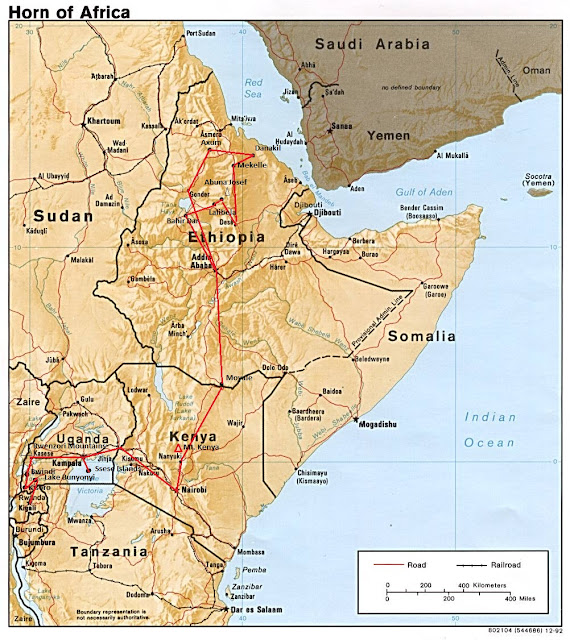Rwanda is like an onion. Or a parfait. It has layers. Arriving in Kigali is like arriving in an African parallel-universe. In this universe everything is ordered. Everything is clean. The scooter drivers wear helmets. The military wear smiles. There are no goats. But beneath this welcomed veneer of the perfect African capital lies something a little more sinister. Peel it back and everyone and everything has a vicious skeleton in the closer. The truth is: the ghosts of the genocide are really running the show.
The parish we stayed in, for example, hid two thousand Tutsis for months on end and saved their lives. The St. Famille Church next door was less fortunate and thousands were massacred there in a matter of hours. To escape these thoughts we went to the Hotel Mille Collines for a beer - only to find it was the hotel immortalised in the film 'Hotel Rwanda' for housing Tutsi refugees and expats escaping the bloodshed. Our own escape was difficult. Even at the taxi ranks, dismembered beggars mill about as an uncomfortable reminder that everyone in this country over the age of eighteen has either committed or witnessed the worst atrocities of the twentieth century.
The countryside is magnificent but is home to no less ghosts than the urban centres. The epic Virunga Volcanoes in the north: the area where the Tutsi rebels came in to Rwanda from to end the genocide. The azure waters of Lake Kivu: where a million fleeing Hutus formed the largest refugee camp in history. The perpetual blue haze that floats around Rwanda's thousand hills is like the aimless drifting of souls in limbo.
And yet, in spite of all this, the miraculous has occurred. Rwanda has pulled itself back from the abyss and has thrived since 1994. From being the WHO's Worlds Poorest Country where not even a single type-writer remained in the civil service it is now the site of huge development projects and a booming economy. A people that tore themselves to shreds have somehow reconciled and moved forward together. The ghosts still linger in every household and in on every street corner. But eventually they too will find some rest.

































